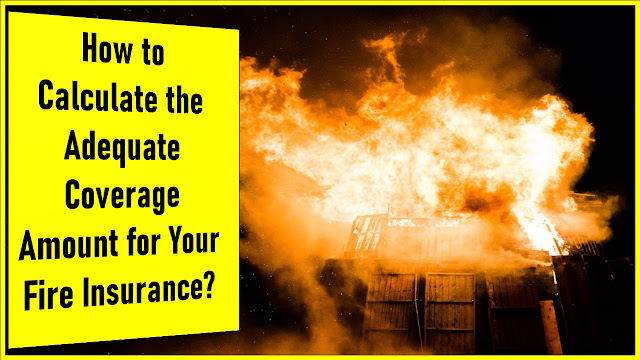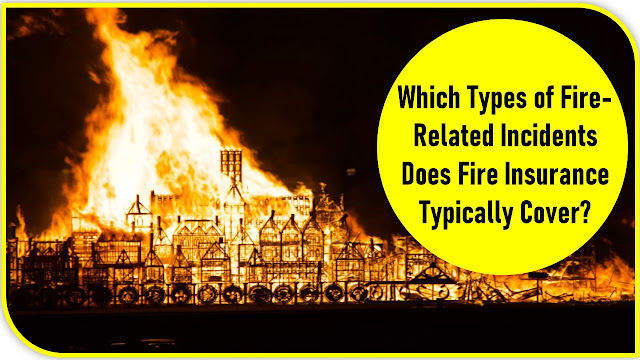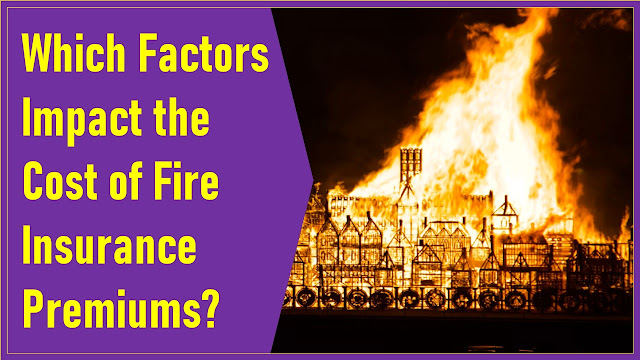What Does Fire Insurance Cover and How Does It Protect Your Property?

Introduction.
In this article, I’ll delve into the essential details of fire insurance, shedding light on what it covers and how it acts as a crucial safeguard for your property. Fire, a formidable force of destruction, can strike unexpectedly, leaving a trail of devastation in its wake. From residential homes to commercial establishments, no property is immune to the threat of fire. Fortunately, fire insurance offers a vital safety net, providing financial protection and peace of mind to property owners. By understanding the scope of coverage and the mechanisms that underpin fire insurance, you can make informed decisions to safeguard your assets and secure your investments.
Fire insurance goes beyond mere compensation for property damage caused by flames; it encompasses a wide array of perils related to fire, such as smoke, soot, and water damage from firefighting efforts. In this exploration, we will unravel the intricacies of fire insurance policies, exploring the various scenarios in which they come into play. We’ll also discuss how these policies can make a pivotal difference in the aftermath of a fire, helping you rebuild your life and restore your property. So, let’s embark on a journey to understand the invaluable protection that fire insurance offers and how it can be your shield against the unpredictable forces of nature.
- Fire insurance coverage essentials: Property and content protection.
- . Perils beyond flames: Smoke, water damage, and associated risks.
- Determining coverage limits and policy options for tailored protection.
- Claims process and documentation: Navigating post-fire recovery efficiently.
- Fire insurance premiums: Factors affecting costs and savings strategies.
- Fire prevention measures: How they influence coverage and rates.
Fire Insurance Coverage Essentials: Property and Content Protection
Fire insurance is a fundamental means of protecting both your property and its contents from the devastating consequences of a fire. This coverage typically encompasses the repair or replacement of structures on your property, including your home or business premises. It extends to damages caused by flames and the heat generated by a fire. While this may seem intuitive, it’s essential to read the policy carefully to understand specific inclusions and exclusions regarding property coverage.
Additionally, fire insurance doesn’t stop at safeguarding your physical structures; it also extends its protective umbrella over your personal belongings or business assets. This aspect of the coverage ensures that the contents inside your property, such as furniture, electronics, clothing, and valuable possessions, are covered in case of fire-related damage or loss. Understanding the nuances of this coverage is crucial, as it varies from policy to policy, and additional riders.
Perils Beyond Flames: Smoke, Water Damage, and Associated Risks
Fire insurance isn’t solely limited to the destruction caused directly by flames. It also accounts for the collateral damages that often accompany a fire. Smoke and soot, for instance, can permeate your property, causing extensive damage to walls, ceilings, and personal belongings. Fire insurance typically covers the cleanup and restoration expenses associated with these smoke-related damages.
Moreover, the firefighting efforts to douse the flames can result in water damage. Fire insurance policies typically include provisions to address this, ensuring that repairs to water-damaged areas, like flooring and walls, are covered. Other associated risks, such as damage from falling debris or vandalism in the aftermath of a fire, may also be included in your policy. It’s crucial to thoroughly review your fire insurance policy to understand the extent of these additional coverages and any limits that may apply.
Determining Coverage Limits and Policy Options for Tailored Protection
When considering fire insurance, it’s vital to determine the coverage limits and explore various policy options to ensure tailored protection for your specific needs. Coverage limits refer to the maximum amount your insurance policy will pay in the event of a fire-related claim. Assess your property’s value, including structures and contents, to establish appropriate coverage limits. Underinsurance can lead to financial setbacks in case of a fire, while overinsurance may result in unnecessarily high premiums.
Policy options play a crucial role in tailoring your coverage. You can choose from various policy types, such as actual cash value (ACV) or replacement cost coverage. ACV policies reimburse you for the depreciated value of damaged property, while replacement cost coverage ensures you receive compensation for the cost of replacing or repairing items at their current market value. Understanding these options helps you align your policy with your budget and coverage preferences.
Claims Process and Documentation: Navigating Post-Fire Recovery Efficiently
In the unfortunate event of a fire, a streamlined claims process can make a significant difference in your post-fire recovery efforts. Begin by promptly notifying your insurance company of the fire and initiating the claims process. It’s essential to document the damage thoroughly, including photographs and detailed descriptions of affected property and belongings. This documentation serves as crucial evidence during the claims assessment.
Working closely with your insurance adjuster is pivotal to ensure a smooth process. Provide them with all requested information and documentation promptly. Keep records of all communication with your insurer, including claim numbers and names of representatives. This organized approach helps expedite the resolution of your claim. Additionally, it’s essential to be aware of any deductibles or policy-specific requirements, as these can affect the amount you receive in compensation. Being prepared and knowledgeable about the claims process is key to navigating the post-fire recovery efficiently.
Fire Insurance Premiums: Factors Affecting Costs and Savings Strategies
Fire insurance premiums, the periodic payments you make to maintain your coverage, are influenced by various factors. The primary determinant is the level of coverage you choose, including property and content protection. Higher coverage limits result in higher premiums. Additionally, the type of property you’re insuring, its location, and the local fire risk also impact premiums. Properties in areas prone to wildfires or with inadequate fire protection measures may face higher costs.
To save on fire insurance premiums, consider implementing fire prevention measures on your property, such as installing fire-resistant roofing and siding, smoke detectors, and sprinkler systems. Improving overall safety can lead to premium discounts. Bundling your fire insurance with other policies, such as homeowners or auto insurance, can also result in cost savings through multi-policy discounts. Finally, shopping around and comparing quotes from different insurers can help you find the most competitive rates for your desired coverage.
Fire Prevention Measures: How They Influence Coverage and Rates
Fire prevention measures play a pivotal role in shaping your fire insurance coverage and premium rates. Insurance providers closely evaluate the level of fire risk associated with your property when determining the cost of coverage. Properties that have robust fire prevention measures in place are typically seen as lower risks, resulting in more favorable premium rates.
One essential aspect of fire prevention is maintaining a defensible space around your property. This involves clearing away flammable vegetation, creating a buffer zone, and ensuring that trees and shrubs are pruned to minimize the risk of fire spreading. Additionally, installing fire-resistant materials for roofing and siding can significantly reduce the risk of your property catching fire in the first place. Adequate fire alarms, sprinkler systems, and fire extinguishers can also be beneficial, not only for safety but also for potential premium discounts. Insurance providers often offer incentives and discounts for policyholders who invest in these preventive measures, as they reduce the likelihood of a costly fire-related claim. Therefore, taking proactive steps to minimize fire risk on your property not only enhances your safety but can also lead to more affordable fire insurance coverage.
Furthermore, it’s essential to keep these preventive measures up-to-date and well-maintained to ensure their effectiveness. Regular inspections and maintenance can demonstrate your commitment to fire safety to insurers, potentially resulting in further premium reductions. By investing in fire prevention and maintaining a vigilant approach to safety, you not only protect your property but also enjoy the benefits of lower fire insurance rates.
Conclusion
I hope this exploration of fire insurance coverage has provided you with a comprehensive understanding of its significance in safeguarding your property. Fire, with its destructive potential, can strike when least expected, but with the right insurance policy in place, you can fortify your defenses against its devastating consequences.
In conclusion, fire insurance extends its protective embrace not only over your physical structures but also your precious possessions, offering financial security and peace of mind. It covers a wide range of perils beyond the flames themselves, including smoke and water damage, ensuring that you’re well-prepared to weather the aftermath of a fire. To maximize the benefits of fire insurance, it’s crucial to tailor your coverage, stay informed about the claims process, and implement fire prevention measures. By doing so, you not only protect your property but also secure your investment and pave the way for a more resilient and secure future.







